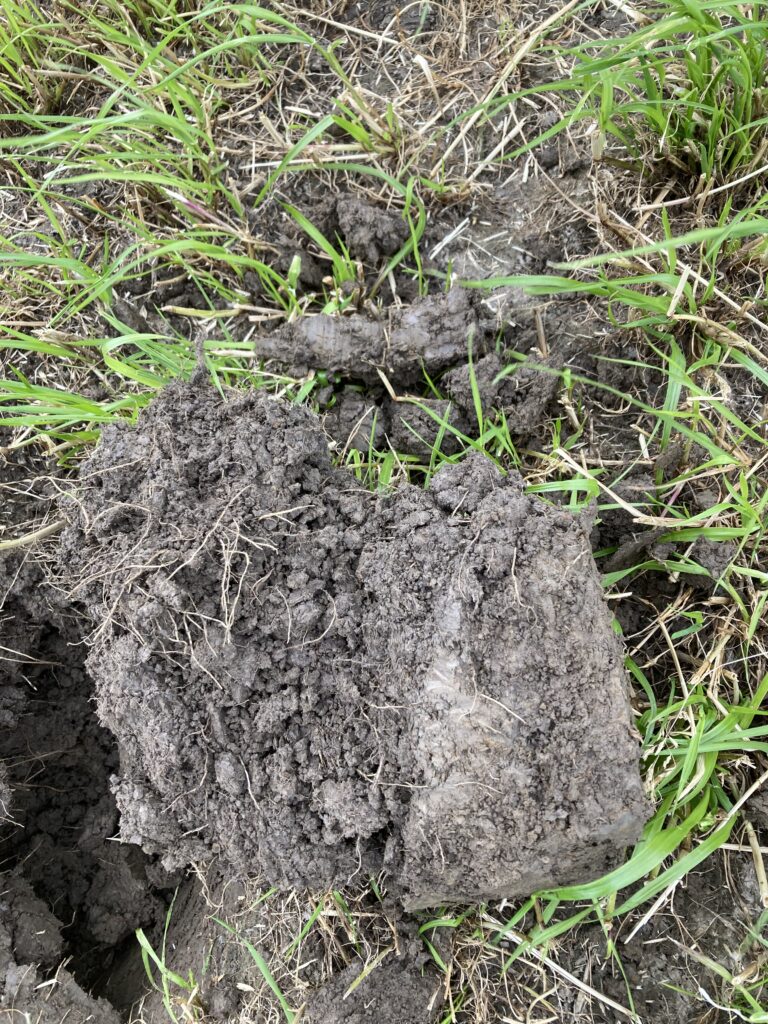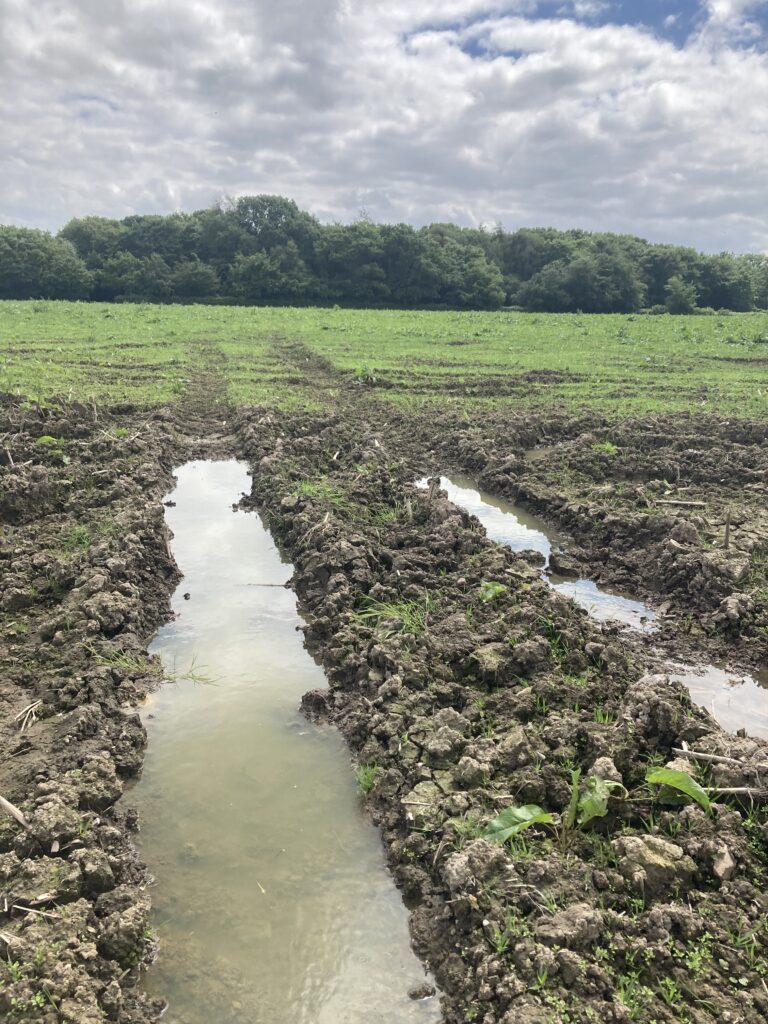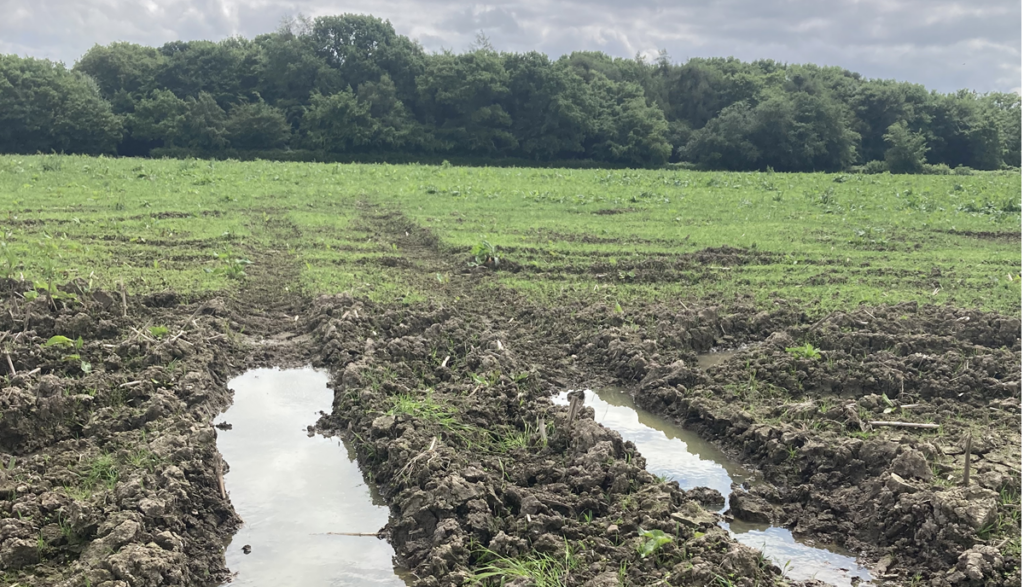With the delayed Spring, forages stocks have been severely challenged, late turn out meant that already depleted Winter stocks were used, and grazing paddocks left longer than expected in warm wet conditions continued to grow so quality was reduced. This alongside being unable to apply fertiliser particularly in the heavier soils of the west has meant a late start to both grazing and silaging in the livestock sector. Even now soils have not recovered, recent silaging has been under challenging conditions in many areas trailers and foragers being pulled in and out of fields. This means that the silage is likely to be poorer quality due to late cutting, little or no fertiliser applied so yields not what they could be and the resulting damage and compaction to fields potentially having a knock-on effect for 2nd cut. Upon completion of VESS soil inspections around the country, compaction can be seen because of heavy winter rainfall, animal treading following a wet Autumn and Spring, this will mean that plant roots will be restricted from taking up water if the summer turns dry reducing the ability of the plant to endure periods of drought.
In order to help the soil recover its essential that nutrients are balanced and increasingly this is not the case in livestock situations, muck and slurry being added to the soil whilst improving organic matter can mean that potassium and magnesium levels become above optimum, locking up essential access to magnesium in the Spring when animals most need it to prevent staggers, (hypomagnesaemia) generally magnesium is increased in the diet during this period to help prevent this lethal condition but this ends up in the soil increasing the tightness of the soil profile and decreasing the ability for water to filtrate. If that also coincides with low pH there is a continuous cycle of problem, cause, solution, adding to the soil’s poor health meaning that it becomes less resilient to the weather challenges.
The solution is usually not a simple fix as complex as the problem starts it needs to be unpicked at chemical, biological and physical level. Soil sampling regularly is essential not only from a farming rule for water prospective which requires a basic soil test but also investigate more depth with either a broad spectrum or if you are grazing livestock an animal health test which will give you indicators regarding selenium and cobalt essential for livestock health and fertility. This can then be supported by tissue tests of the grass and silage mineral tests. Going a step further will allow an increased focus on balance. The magnesium and calcium balance is very important to help reduce the risk of tight soils and improve the soil health, this is easier to remedy if the pH is low as liming is a simple solution to improve nutrient availability and calcium is essential for animal health too. Addressing the chemical imbalances goes a long way to improving the conditions of the soil but compaction still needs to be remedied. Digging a visual inspection pit (VESS) is key to understanding where in the soil profile the problem is. If it is near the surface, it is likely that animal treading is the cause, particularly after such a long and wet winter. A sward slitter is the best friend of grassland and will increase the air into the soil, then allow water to filtrate through the soil profile this kickstart will improve the nutrient availability to the grass and increase grass growth, improving yield and longevity of the ley. If the compaction is at a deeper level than a sward lifter might be necessary, bear in mind that after treatment there is more likelihood of compaction so care must be taken to avoid that.


After a difficult and protracted 1st cut is essential to make the best of subsequent cuts, analysing slurry will help ensure improved decisions regarding applications of Nitrogen. The slurry varies according to the animal’s diet so each farm slurry will be different making judging nutrients applications difficult. Regular analysis will build a pattern, and this can be used in the Nutrient Management Plan throughout the season so help improve nutrient efficiency on farm throughout the season.
Remembering to adjust the Nitrogen applications to account for clover content is important as clover will not nodulate if it is overfed and this will result in less production of nitrogen. Clover in the diet is not only very digestible but providing cost effective protein which saves on bought in expensive proteins also improving the carbon footprint of the farm. With SFI’s proving to be popular with both arable and livestock farmers there is an increasing emphasis on clover and multi species leys will be sown in the thousands of acres across the UK, these will take some management with so much variation in the makeup of the mixture it is important to aim for the end goal when deciding what to have in the ley.
Chicory for example will want to be left out of cutting leys as it is prone to get woody in maturity that will be unpalatable at best and at worst will break the plastic on bales. The mixtures that qualify for SAM3 can have little high quality grasses so ensure that if you are wanting high production and quality the choice of grass in the mixture is important, the makeup of what is actually in the field will not only vary due to the original makeup of the mixture but when it is planted, the soil type and the nutrient balance when it is planted, each season they will be made up of different percentages of plants dependent on growing conditions that will suit the individual variety of plant.
There is a lot of learning to be done both from growers and agronomists that look after these crops, weed control is virtually non-existent apart from spot spraying so it is essential that it is sown into as weed free situation as possible and that the nutrients are right to get the crop off to a good start. This can be done using an overseeding method if the conditions are right, grazing down the competition before drilling is essential, animals can be kept in the field until the new seedlings start to emerge, then they should be taken off until established, followed by a light grazing. Footfall is helpful to gain seed to soil contact soon after drilling. Take note of species that do well and that which does not and then mixtures can be modified to make best use on the land that it does well on.


